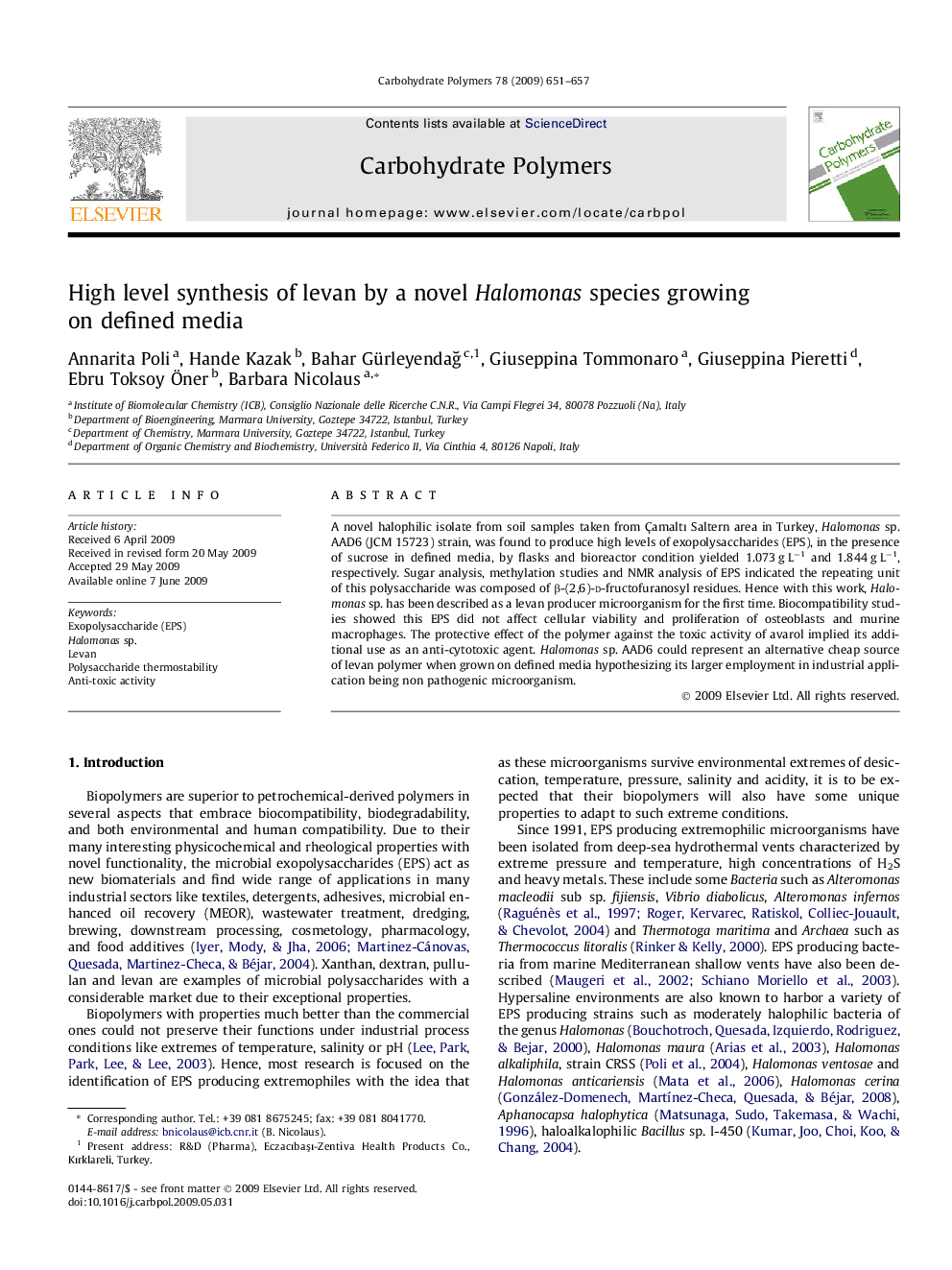| Article ID | Journal | Published Year | Pages | File Type |
|---|---|---|---|---|
| 1378381 | Carbohydrate Polymers | 2009 | 7 Pages |
A novel halophilic isolate from soil samples taken from Çamaltı Saltern area in Turkey, Halomonas sp. AAD6 (JCM 15723) strain, was found to produce high levels of exopolysaccharides (EPS), in the presence of sucrose in defined media, by flasks and bioreactor condition yielded 1.073 g L−1 and 1.844 g L−1, respectively. Sugar analysis, methylation studies and NMR analysis of EPS indicated the repeating unit of this polysaccharide was composed of β-(2,6)-d-fructofuranosyl residues. Hence with this work, Halomonas sp. has been described as a levan producer microorganism for the first time. Biocompatibility studies showed this EPS did not affect cellular viability and proliferation of osteoblasts and murine macrophages. The protective effect of the polymer against the toxic activity of avarol implied its additional use as an anti-cytotoxic agent. Halomonas sp. AAD6 could represent an alternative cheap source of levan polymer when grown on defined media hypothesizing its larger employment in industrial application being non pathogenic microorganism.
